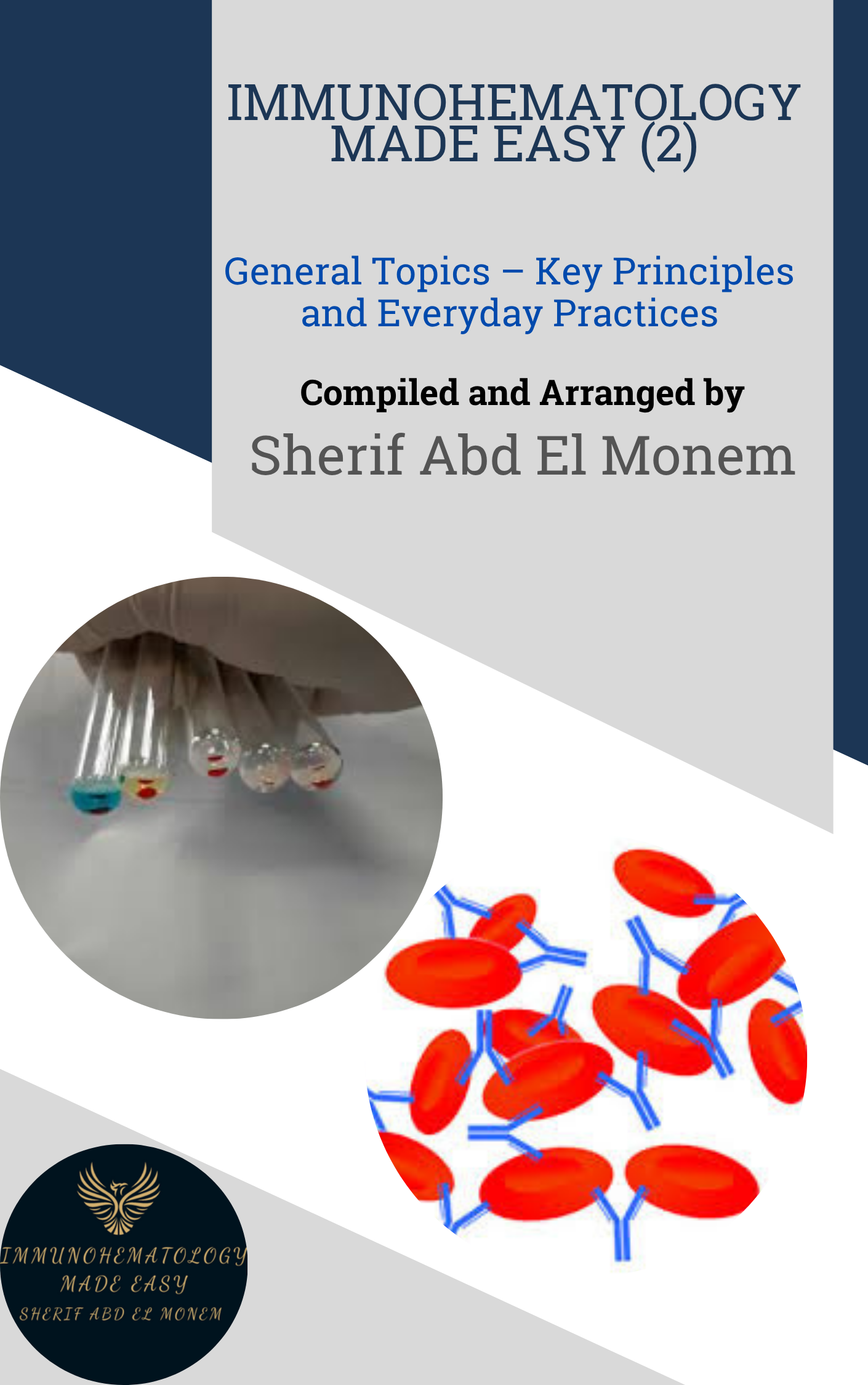[Summaries and Mind map] The effects of pen ink and surface disinfectants on red blood cells stored in plasticized polyvinylchloride transfusion bags
These summaries are assisted by AI
First summary :
🌟 Achievements And Significance:
The study uncovered that pen markings and surface disinfectants applied to red blood cell bags did not adversely affect the quality of the blood cells. No differences were observed in critical quality markers, such as count, morphology, deformability, and hemolysis, between treated and untreated bags. Moreover, no ink traces were detected inside the bags. These findings provide evidence supporting the safe use of pen markings and surface disinfectants on blood bags, thereby reducing unnecessary blood wastage in clinical settings.
📚 Background And Context:
Objective:
This study explores the effects of pen markings and surface disinfectants on the quality of red blood cells (RBCs) stored in plasticized polyvinyl chloride (PVC) transfusion bags.
Common Practice:
Pen markings and disinfectants are commonly utilized in clinical settings on blood bags, but their impact on RBC quality and ink diffusion through the bags remains unclear.

Immunohematology Made Easy (2)
General Topics – Key Principles and Everyday Practices
📘 Available now in PDF & EPUB formats
🔗 Visit Store
Investigation Scope:
The study examines various types of pens (water, oil, and alcohol-based) and disinfectants (ethanol, hydrogen peroxide, and benzalkonium chloride-based wipes), analyzing RBC markers such as count, morphology, deformability, potassium content, and hemolysis.
Goal:
Provide evidence supporting the safe use of pen markings and disinfectants on blood bags, with the potential to reduce unnecessary blood wastage.
Ethical Compliance:
The study is conducted in accordance with relevant standards and ethics protocols.
🔍 Contributions To The Field:
The research contributes to the field by investigating the effects of pen markings and surface disinfectants on the quality of RBCs stored in PVC transfusion bags. The results demonstrate that these interventions do not negatively impact the in vitro quality of RBCs, providing valuable evidence for the safe utilization of pen markings and disinfectants on blood bags and reducing unnecessary blood wastage.
💬 Discussion And Interpretation:
Study Design:
The study investigates whether pen markings and surface disinfectants affect the quality of RBCs stored in plasticized polyvinylchloride transfusion bags.
Interventions:
RBC bags were marked with different types of pens and subjected to surface disinfection using various disinfectants.
Time Points:
RBC samples were collected 24 hours after treatment and at day 42 post-collection for analysis of various RBC quality markers.
Results:
No differences were found in RBC count, morphology, deformability, potassium content, or hemolysis between treated and untreated bags at both time points. Additionally, no trace of ink was detected inside the bags.
Conclusion:
The study concludes that RBC units marked with different pens and surface-disinfected do not experience a loss of in vitro quality, affirming the safety of pen markings and surface disinfection on blood bags.
❌ Limitations And Future Work:
Limitations:
- Applicability restricted to packed RBCs in plasticized PVC transfusion bags.
- In vitro quality markers analyzed, with no assessment of efficacy in transfusion.
- Limited types of pens and disinfectants tested.
- Ink diffusion studied for two pen types only.
- Sampling conducted at two time points (24 hours and day 42) after treatment.
Future Work:
- Investigate effects on other blood components and storage containers.
- Conduct clinical studies to assess the impact on transfusion outcomes.
- Test additional types of pens and disinfectants.
- Analyze ink diffusion for different pen types using sensitive techniques.
- Conduct long-term studies beyond the maximum allowable storage time of RBC units.
🧪 Methodology:
The study investigated the effects of pen ink and surface disinfectants on red blood cells stored in plasticized polyvinyl chloride (PVC) transfusion bags. Various pens (water-based, oil-based, or alcohol-based) and disinfectants (ethanol, hydrogen peroxide, or benzalkonium chloride-based wipes) were used. Samples were collected 24 hours after treatment and at day 42 post-collection, analyzed for RBC in vitro quality markers. Mass spectrometry was employed to detect ink inside the bags, with results confirming the safety of pen markings and disinfectants on blood bags.
🎯 Research Objectives And Hypotheses:
Research Objectives:
- Investigate the effects of pen markings and surface disinfectants on the quality of packed red blood cells in PVC transfusion bags.
- Determine if pen ink diffuses through the blood bag when marked with different pens.
- Provide evidence supporting the safe use of pen markings and surface disinfectants on blood bags, reducing unnecessary blood wastage.
Hypotheses:
- Pen markings and surface disinfectants will not negatively affect the in vitro quality markers of RBCs.
- No trace of ink will be detected inside the RBC bags after pen markings.
- Pen markings and disinfectants can be safely used on blood bags without compromising the quality of RBCs, reducing unnecessary discarding of RBC units.
📊 Results And Findings:
The study investigated whether pen markings or surface disinfection negatively affect the quality of packed red blood cells stored in PVC transfusion bags. Findings revealed that various pen markings and surface disinfectants did not result in any loss of in vitro RBC quality. Importantly, there was no detectable ink diffusion into the RBC bags, supporting the conclusion that pen markings and surface disinfectants are safe to use, contributing to the reduction of unnecessary blood wastage.
📑 Structure And Flow:
The study design involved investigating the effects of pen markings and surface disinfectants on the quality of red blood cells stored in PVC transfusion bags. RBC bags were marked with different pens and subjected to various surface disinfection methods. Samples were collected at two time points, and the study analyzed RBC in vitro quality markers. The findings confirmed the safety of pen markings and disinfectants on blood bags, with no adverse effects observed on RBC quality.
Another summary:
🎓 Citation Information:
- Authors: Ralph Justin Uy, Andrew W. Shih, Katherine Serrano, Dana Devine, Narges Hadjesfandiari
- Title: The Effects of Pen Ink and Surface Disinfectants on Red Blood Cells Stored in Plasticized Polyvinylchloride Transfusion Bags
- Journal/Source: Transfusion
- Publication Year: 2024
- Pages: 141–149
- DOI/URL: https://doi.org/10.1111/trf.17620
- Affiliation: Centre for Blood Research, University of British Columbia, Vancouver, British Columbia, Canada
🌌 Contextual Insight:
In a Sentence:
This study explores the potential negative impacts of pen markings and surface disinfection on the quality of red blood cells stored in plastic blood bags.
Keywords:
red blood cells, transfusion, plasticized polyvinylchloride, pen ink, surface disinfectants
Gap/Need:
Addresses uncertainty around the impact of common bag alterations like marking/disinfection, which can lead to unnecessary wastage if effects are unknown.
Novelty:
First study to specifically examine the quality of red blood cells stored in bags, with previous research focusing on crystalloid solutions. Assessed multiple quality markers over storage duration.
Target Audience:
Academics and transfusion medicine professionals to inform handling practices and minimize unnecessary discards.
Jargon Density:
Relatively easy to understand for non-experts, with definitions provided for specialized terms.
Recommendation:
Recommended for intermediate/experienced readers due to some technical language and methodology, but conclusions are accessible.
🧭 Purpose/Objective:
– Goal:
Determine if pen markings or common surface disinfectants negatively impact RBC quality during standard storage periods.
– Research Questions:
- Do pens/disinfectants affect specific RBC quality markers?
- Do pens/disinfectants permeate through bags?
– Significance:
Inform handling guidelines by addressing primary reasons RBC units may be unnecessarily discarded.
🎓 Background Knowledge:
– Core Concepts:
RBC storage lesion, quality markers (hemolysis, morphology, deformability), material permeation.
– Preliminary Theories:
N/A
– Contextual Timeline:
Prior studies evaluated marker permeation but not effects on stored blood components.
– Prior Research:
Studies evaluating permeability of pens/solutions through bags but not impacts on stored blood.
– Terminology:
RBC, hemolysis, morphology, deformability, plasticized polyvinylchloride.
– Essential Context:
Handling practices and standards, concerns around unnecessary wastage.
📝 Methodology:
– Research Design & Rationale:
Assessed quality markers at set timepoints, repeated trials to strengthen statistical power.
– Participants:
Leukoreduced RBC units from blood donations.
– Instruments:
Analyzers for quality marker assessment, mass spectrometry for ink detection.
– Data Collection:
Sampling bags at set intervals post-intervention and over storage.
– Data Analysis:
ANOVA for comparing groups.
– Ethical Considerations:
Approved human subjects protocol, anonymized donations.
– Comparison to Standard:
Adhered to standard transfusion medicine practices.
– Replicability Score:
8/10, detailed methods enable replication.
📊 Main Results/Findings:
– Metrics:
RBC count, morphology, deformability, hemolysis, potassium levels.
– Outcomes:
No statistically significant differences between test and control groups for any markers.
– Statistical Significance:
Changes over time expected and consistent between groups.
– Data Availability:
Not explicitly stated but standard laboratory assessment techniques.
– Unintended Findings:
No ink detected in bags down to ppb levels by mass spectrometry.
🔄 Discussion & Interpretation:
– Authors’ Views:
Interventions did not negatively impact RBC quality or permeate bags.
– Comparative Analysis:
Aligns with prior work on permeation but first to look at stored RBCs.
– Contradictions:
None presented or evident.
❌ Limitations:
– Single-center, small sample size
– Did not assess all possible pens/disinfectants
🖋️ Conclusions:
– Takeaways:
Common bag markings/disinfection did not affect RBC quality or permeate bags.
– Practical Implications:
Support continuing these practices to avoid unnecessary discard.
🚀 Future Work:
– Evaluate additional pens/disinfectants
– Mechanistic studies of permeation
📚 References:
Numerous well-cited prior studies on related topics
🎯 Relevance:
– Significance:
Informs transfusion guidelines on acceptable bag alterations.
– Real-world Implications:
Potential to reduce unnecessary wastage if findings implemented.
🌐 Textual Mind Map:
Introduction
- Central Ideas: Study motivation, background on relevant standards/practices
- Key Arguments: Need to address unknown impacts of common alterations
- Interconnections: Links alterations to unnecessary discard and constrained supply
Methods
- Central Ideas: Repeated trials of interventions on stored RBC units
- Significant Facts: Assays for multiple quality markers over storage duration
- Key Arguments: Rigorous design and assessment strengthen conclusions
Results
- Central Ideas: No differences detected between groups for any marker
- Significant Facts: No ink detected in bags by sensitive mass spec method
Discussion
- Central Ideas: Interventions did not impact RBC quality or permeate bags
- Key Arguments: Aligns with prior permeability work, first to assess stored components
Conclusions
- Central Ideas: Support continuing common practices to avoid discard
- Interconnections: Practical implications if implemented in transfusion guidelines
🌟 Key Quotes:
“Each unit of red blood cells (RBCs) produced represents a significant cost to the healthcare system. Unnecessary blood wastage should be minimized.”
🧠 Personal Insights/Comments:
- Rigorous methodology lends confidence in conclusions that support continuing common practices.
- Single center limits generalizability but methods enable extension/validation by other groups.
- Mechanisms of any permeation remain unclear – an interesting avenue for future work.

Immunohematology Made Easy (2)
General Topics – Key Principles and Everyday Practices
📘 Available now in PDF & EPUB formats
🔗 Visit Store

📘 New to Blood Bank?
Start your 5-day journey with Immunohematology Made Easy — a simple, beginner-friendly guide with real-life examples!
👉 Get Your Copy Now![[Summaries and Mind map] The effects of pen ink and surface disinfectants on red blood cells stored in plasticized polyvinylchloride transfusion bags](https://immunohematologymadeeasy.net/wp-content/themes/bravada/resources/images/headers/mirrorlake.jpg)